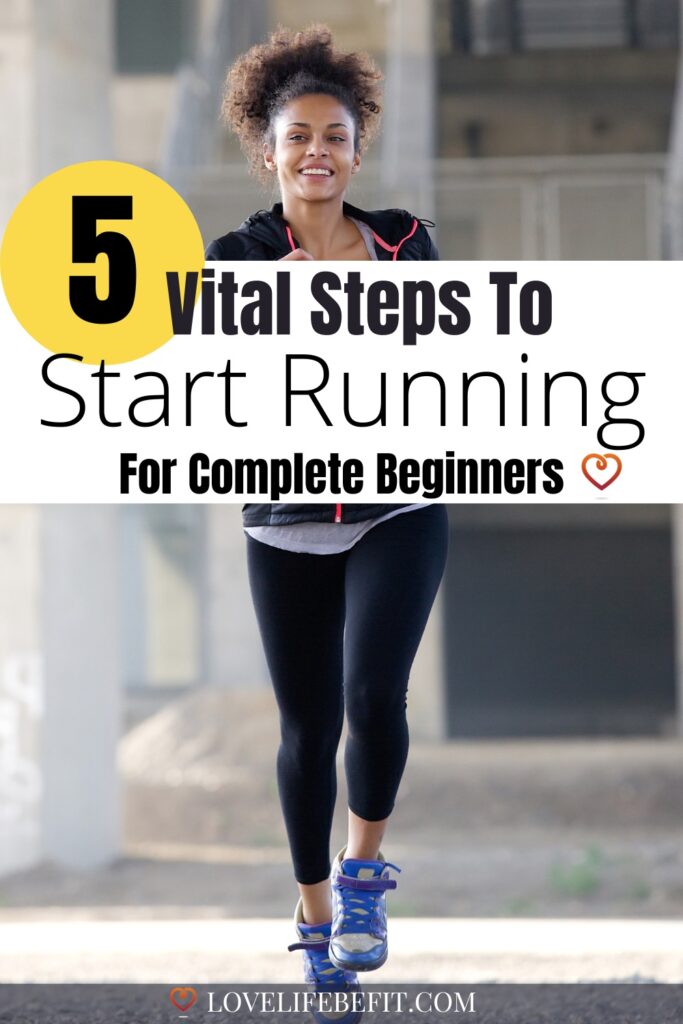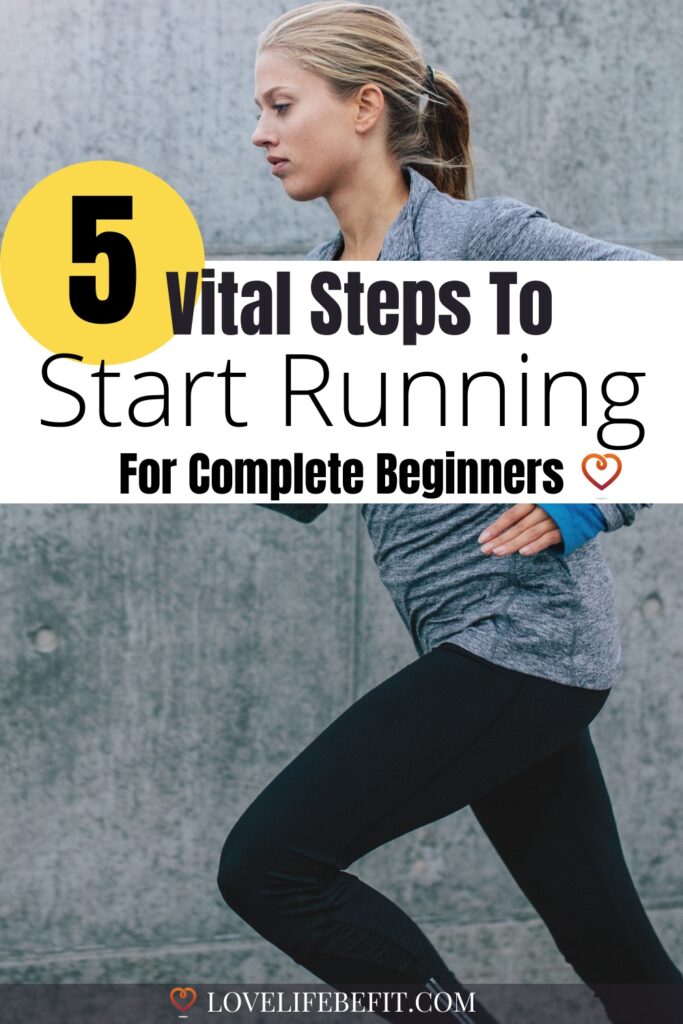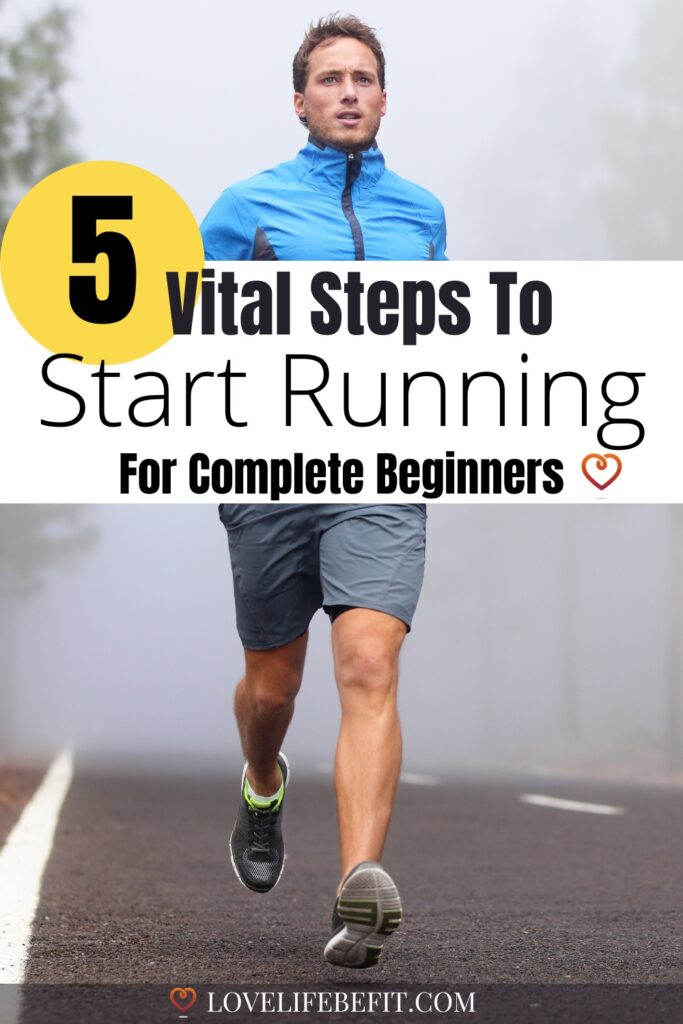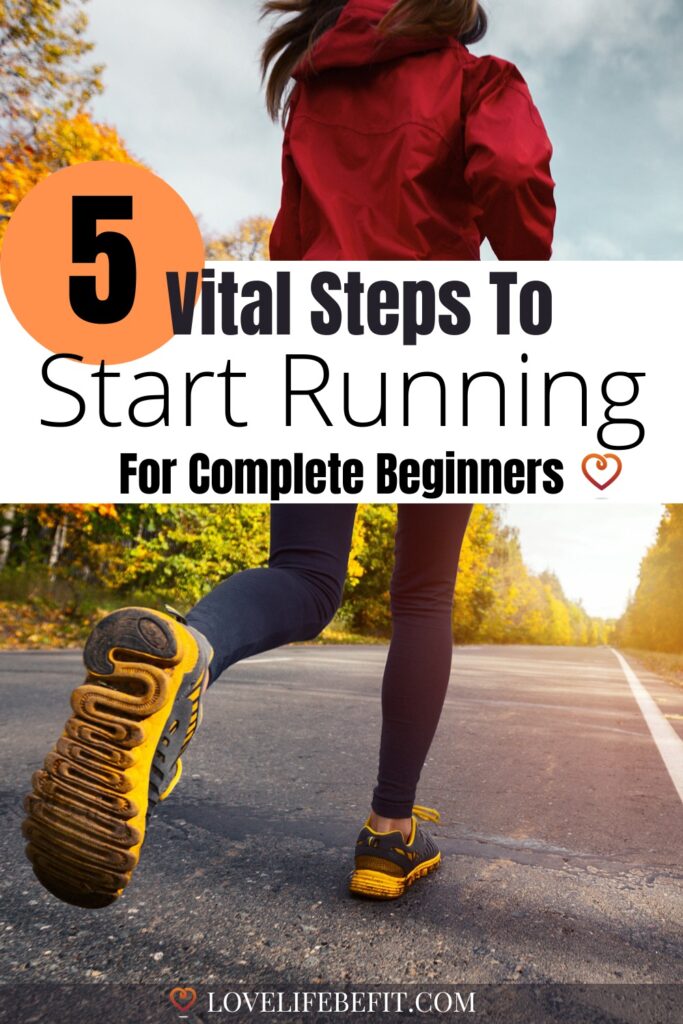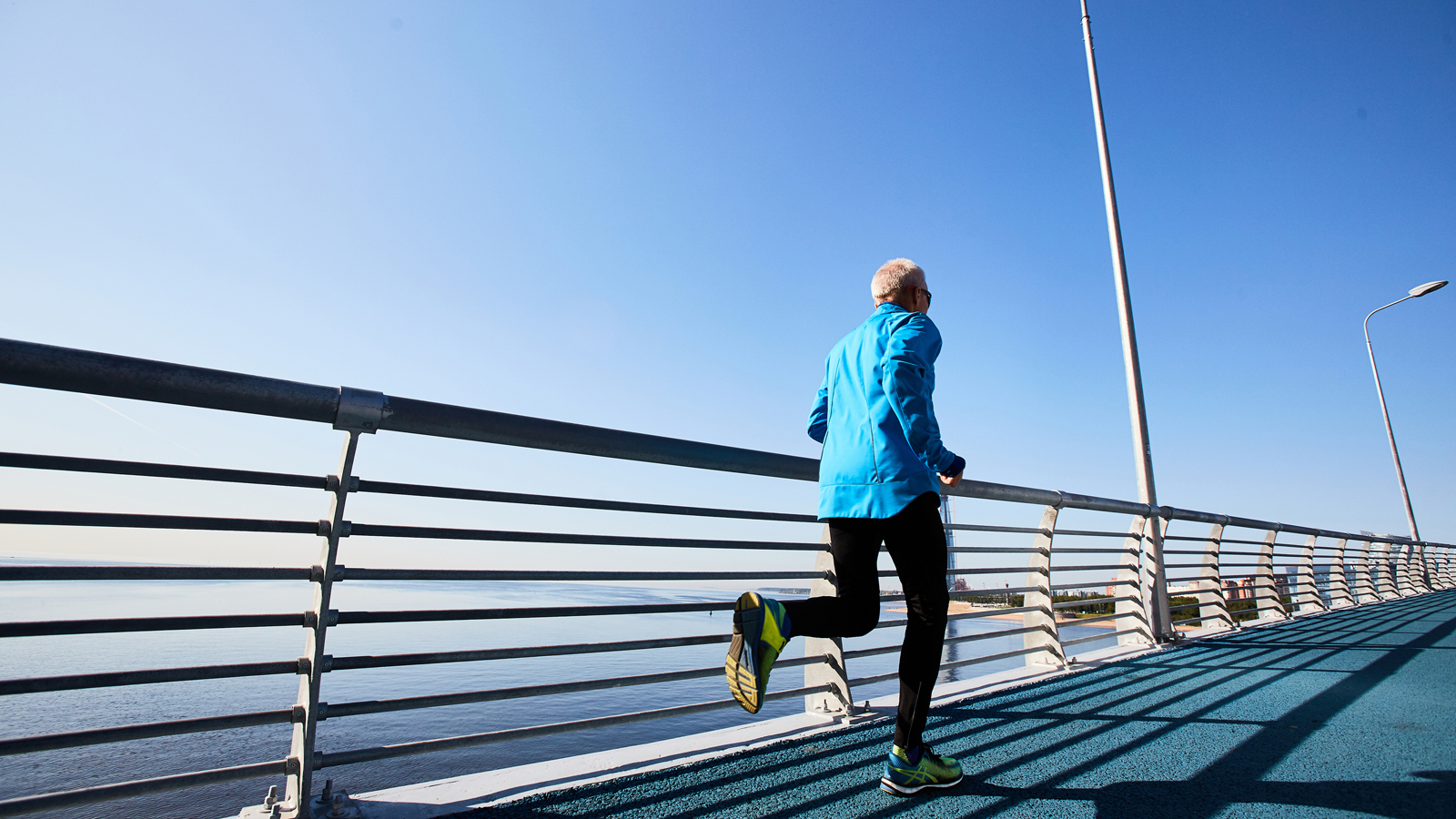5 Vital Steps To Start Running For Complete Beginners
Want to start running? You’re a beginner and you’re not really sure what you’re doing? You’ve come to the right place. This is a complete “How to start running for beginner’s guide” by a UESCA-trained running coach.
I’ve run at every end of the spectrum from elite to barely jogging and made my fair share of mistakes over the years. I’m going to help you avoid them. Whatever your goals, from weight loss to just being a bit fitter, this guide will give you tips to run properly, stay injury-free, and run your first 5K or even a marathon.

How To Start Running As A Beginner
Here’s what we’ll be covering from the easiest ways to start running, to building up to long runs and finding a good pair of shoes:
Step 1 How To Run – Prepare
- Get a check-up, Lose some weight (if you need to), Start with a walking plan, and invest in good shoes.
Step 2 How To Run – Your First Run
- Warm-up first, Avoid bad habits (stick to a fast leg turnover, no sagging at the hips, use your arms), It’s okay to walk, Breathe from the gut, Keep it short, and cooldown.
Step 3 How To Run – The First Few Weeks
- Run slowly, Aim to run 3 times a week, Get to the ninth run and build your running routine.
Step 4 How To Run – Becoming A Runner
- Find a buddy, Enter a race, Get your support team, Stay safe, Embrace the bad runs, and Reward yourself.
Step 5 How To Run – Lifelong Habit
- Decide what type of runner you want to be.
Read on to find out the best way to launch your new running program…
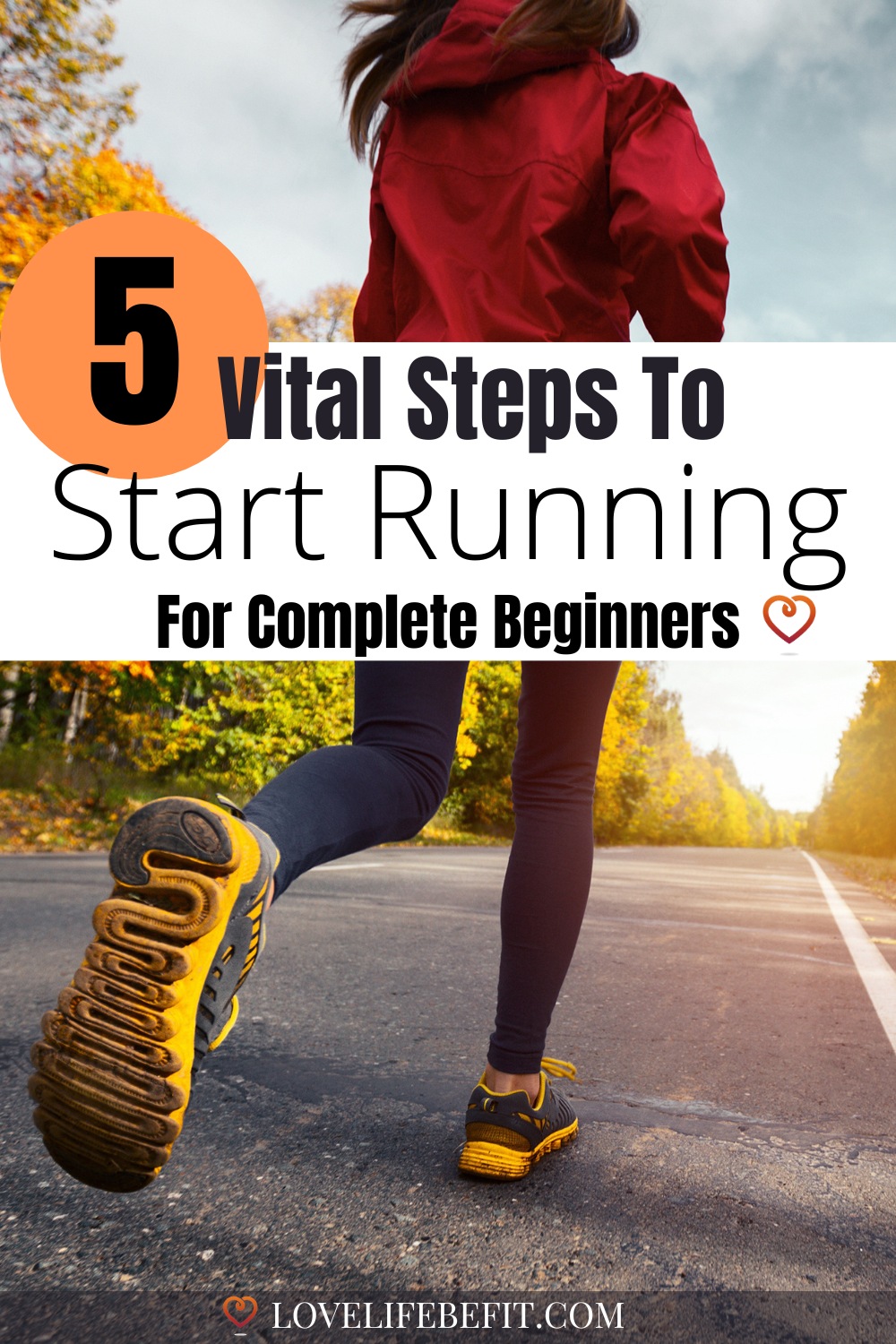
How To Run Part 1 – Preparations
Running is a great way to get fit and lose weight but there are different ways of going about it. So many new runners fail to run with proper form or the right gear and it all goes horribly wrong. The biggest mistakes are normally made in the first few weeks.
My father once hit a mid-life crisis and decided to take up running. He wasn’t overweight but his long spindly legs were unused to any sport. He dug out a pair of old canvas tennis pumps and set off too fast – red-faced and heart rate pounding.
Two miles down the disused railway track where we lived, his knees started hurting and he limped back to the house. He hasn’t run since.
Make sure this doesn’t happen to you by following a few tips to start running:
Get A Check-Up
If in doubt, check in with your doctor before starting a running program. You may feel fine, but there’s always the possibility of underlying health issues. It’s always advisable if you haven’t exercised for a while, you’re carrying excess weight or you have underlying health problems.
Do Something About Those Wobbly Legs
Even jogging around the block is physically demanding if you haven’t run since you were a child. Yes, running is natural, but as adults, we spend far too much time sitting around and our legs lack the muscles to cope with a run.
Most new runners will find it’s better to start with a walking plan. Try walking a few miles every day before you launch into running.
✅ Yoga is good for running-specific strength training. It also stretches out the muscles that naturally tighten as you run. Find a yoga class online…
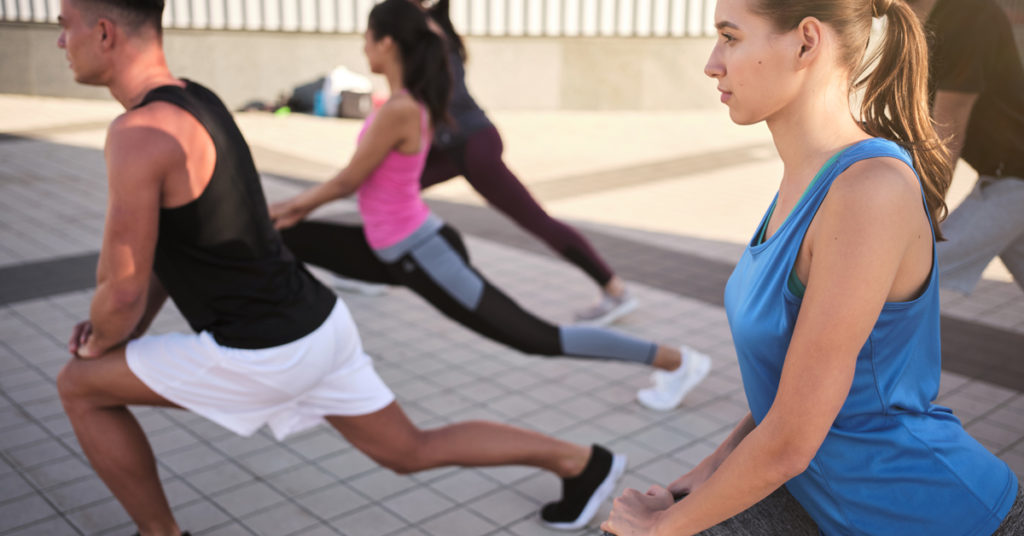
Lose Weight First
Okay, I know, you’re starting running to lose weight! Yet running when you have a lot of weight to lose is discouragingly hard work and puts a lot of stress on your joints.
It can be better to start with a walking weight loss plan first and make a conscious effort to eat better.
Losing weight is 80% about what you eat. Now I’m all for exercising more, and a great believer in exercise helping you to stay on track with your weight loss plans. It’s just that the saying you can’t outrun your diet is true.
That’s why not all runners are super slim! If you want to lose weight, combine exercise with quitting sugar, cutting back on junk food, or try out a plant-based diet.
Invest In A Good Pair Of Running Shoes
You can get by with just about any comfortable clothing for the first few runs but you do need some decent running shoes. Take a trip to your local running shoe shop, but it could leave you baffled by science and worrying about your running gait.
By all means, listen to the expert advice, but bear in mind that as a novice runner, your running gait will change over the next few months and years as your muscles strengthen.
I used to own an outdoor store selling running shoes. To get the right shoe, my advice was to always prioritize comfort. It turns out my views are backed by science. This study shows that if you base shoe selection on comfort, you reduce the risk of injury.
✅ It’s always a good idea to visit an independent running store for your first pair of shoes. If that’s not possible get your shoes online but make sure you test them out for comfort around the house before heading outside.
Use A Sports Bra
Using a sports bra isn’t just advised for women with larger cup sizes. It’s good advice for all women. Make sure you select a high-impact sports bra.
Sports bras are essential for female runners to protect Cooper’s ligaments that support the breasts from stretching. It’s also so much more comfortable!
How To Run Part 2 – Your First Run
There’s no easy way to say this – your first run is going to hurt. You can build up to running with a walking plan, do everything on the preparation list and that first run is still going to be tough.
Don’t think about the amount of time it takes or how fast you run. This is the first step so take walk breaks if you need to and run at a conversational pace. Ideally, you should be able to talk and run at the same time – otherwise, you’re running too fast!
Hang in there! Running does get easier. These tips will get you through your first run and (hopefully) coming back for more…

Warm Up First
It’s always important to warm up before you start running. I’d love to tell you I always start my runs with a dynamic stretching routine. I’m not always that disciplined but I do always start off slowly and warm up before hitting my stride.
This is one of the best dynamic stretching warm-up routines I’ve come across. Easy to do, you could even complete this routine in the parking lot while chatting with friends!
Find Your Running Form
There’s a right way and a wrong way to run. As small children, we run naturally with good form. As adults, our posture has been compromised and new runners often have bad habits. Here are some tips for finding your proper running form and becoming a more efficient runner:
Over-Striding
The big no-no is over-striding. This is where your foot lands too far forward from your body when you run.
It’s a bit like putting a brake on. You’re landing hard on your heel with a straight knee increasing your risk of knee injuries, stress fractures, and shin splints.
One tip to avoid over-striding is to increase your cadence. Your cadence is the number of steps you take per minute.
This isn’t the same as running faster. You’re taking more frequent smaller steps but you can still be running at an easy pace.
For your first few runs don’t worry about any numbers for cadence. Just aim for a fast leg turnover with frequent smaller steps. Running drills are a good way to work on your cadence.
Sagging At The Hips
The other big error you see beginner runners make is sagging at the hips. Runners get tired, their posture slumps and the bum sticks out.
If you ever find yourself doing this, you can feel yourself getting tired and losing your running form – switch to walking, recover and try again.
Ideally, stand tall with a good posture and lean slightly into your run from your ankles. Keep your head slightly forward, with your chin down, and focus your eyes a few meters ahead. (Not at your feet!) Your hips should be in line with the rest of your body.
Do this correctly and it will feel as if your hips are pushed slightly forward.
Arms Flailing And Heels Kicking Out
I have no idea why but so many beginner runners, especially women, run like Phoebe from Friends:
Arms flailing and heels flicking out. It may look fun but it’s a huge waste of energy! Ideally, keep your arms bent at the elbow at around 90 degrees.
Shoulders should be level, and relaxed, (not pushed up around your ears). Swing your arms as you run parallel to your body.
Don’t Be Afraid To Walk
It’s your first run. The start of your running journey. Be kind to your body. Taking walking breaks is definitely allowed.
Alternating running with walking, a run-walk method, gives you the chance to catch your breath, get your pulse rate under control, and give your joints and muscles a break.
Try To Breathe From Your Gut
Learning how to breathe is often the hardest part for new runners. It’s a lot easier when you master how to breathe from your diaphragm (belly) upwards with long slow deep breaths.
This article will teach you how to breathe while running.
Keep your First Run Short
It’s better to get off to a good start by starting with a short run. A distance that won’t tax your body too much and will see you raring to go and ready for more a day or two later.
Cool Down
There are no prizes for sprinting to the finish line when you’re training! It’s best to cool down properly by walking or running slowly for the last few minutes.
Make sure you finish off your training run with some static stretches.
How To Run Part 3: The First Few Weeks
The biggest challenge for new runners is to get through those first few weeks. To find your running routine and stick to a weekly running schedule. To survive until running starts to feel easier and FUN!
Don’t Try And Run Too Fast
I always love running in the New Year! In the first week in January you know you’re going to overtake a 20-something, usually male, who blasted past you a mile or so earlier and is now completely out of puff.
It’s good for my ego but it’s a lot better for yours, as a beginner, if you learn how to pace yourself. Start off slowly.
Get a few runs under your belt at your target distance before you start ramping up the speed. You don’t need to run the entire distance. Most beginner runners find a run-walk method is best where you alternate running and walking.
If you ran competitive sport at school in the distant past I know it’s hard to slow down. Try and visualize that you’ve just done a hard session on the track and you’re going for a cool-down lap.
Yes, that slow!
Get through your first few weeks running then you can start to up the ante. Going from the couch to running hard and fast will just risk injury.
Turn Off Strava
You don’t need to know how far you’ve run for the first few weeks. Base your runs on time rather than distance.
This helps you adjust your distance naturally based on how you’re feeling. Targets will come later.
😍 In case you’re blissfully unaware Strava is a popular app for tracking your runs. You can even compare your times with other runners. It should really carry a health warning – Strava gets extremely addictive!
Aim To Run Three Days A Week
It takes regular running to build a habit and people who run less than three times a week are more likely to quit.
Regular runs will help you build good running fitness. Make time for your runs – many runners find it helps to run early morning or during a lunch break. Your new running routine needs to become a regular habit. These tips will help your running motivation…
Some people run every day, and others will find they need rest days. If possible, aim for active rest where you still do some physical activity such as walking, cycling, or swimming. Try running 20 minutes a day.

Get To The Ninth Run
The ninth run, at the end of your third week, is a big milestone. Three weeks into a new habit is long enough to make a difference.
You should be feeling energized, stronger and be benefiting from some running fitness.
Follow A Plan
It’s not essential but most new runners will benefit from following a training plan. The most popular running plan for beginners is the Couch To 5K Program.
It doesn’t work for everyone and my article suggests how you can adapt the plan and its run-walk method, making the program faster or slower depending on your current level of fitness.
How To Run Part 4: Becoming A Runner
Hopefully, by now, you’ve got the running bug! With the first 3 weeks under your belt, your aim is to make the habit stick. You don’t want to waste the fitness you’ve built up, so you need a plan to stay motivated and on track.
Slowly Build Your Weekly Mileage
Too much too soon will lead to injury. The aim is to build your weekly mileage and the distance of your longest run slowly. Increase by no more than 10% per week to stay injury-free.
Start Running With A Buddy
One of the best ways to stay motivated is to find a running buddy – someone to hold you accountable. A running partner you’ll let down badly if you don’t show up for your run.
An alternative could be signing up for a virtual challenge.
Enter A Race
If you’re following the Couch To 5K Plan, with its run-walk method having a race to aim for is a terrific way to keep on track. The idea of racing may sound intimidating, but most events happily welcome beginner runners.
Aim to complete the running event rather than focus on a time. There will be plenty of opportunities to improve your times in the future. Right now the aim is to enjoy your race and get a sense of satisfaction from finishing.
Be sensible about your first race. Don’t start with a half marathon! You can build up to longer distances when you have more experience. It’s best to go from 5K to 10K to half marathon over the course of your first year running.
Get Your Family Onboard
It helps to have an understanding family. Explain your reasons for taking up running, such as health or carving out some “me-time”.
If you can get them on board it’s going to be much easier to keep to regular runs.
Find Some Variety
Running the same route over and over again can quickly become boring. Try and find new trails and mix it up with your running distances.
If you have limited options, just running your regular route in reverse can add interest.
Running intervals can add interest and also help with your running speed but don’t overdo it. It’s an easy way to get injured as a newbie runner.
By all means, try some easy fartlek where you mix up your running pace, but keep hard intervals for when you’re a stronger and more resilient runner.
Stay Safe
Always tell someone where you’re going, and if you’re running in areas where you’re worried about your personal safety, stick to well-lit streets.
This could be a good time to run with a buddy or small group. Find out if your local road runners club has a beginner section!

Embrace The Bad Runs
Not every run is going to be brilliant. Sometimes you’re tired after a long day or you’re going down with a cold and running is the last thing you want to do.
I find runs can often be a “pick-me-up” but every now and then you have one where you’re tired setting off, tired all the way around, and feel drained at the finish.
Accept it’s not your day, walk a bit or shorten your run. There’s always tomorrow.
If your running plan is pushing you too hard, you can always go back and repeat an easier week.
I find the best plans work on a 3-week rota – one week easy, one week medium, one week hard then back to one week easy. This builds in a chance to recover.
Cross-Train
It’s easy to get carried away and run too much, increasing your risk of running-related injuries. Instead, try and stick to just 3 runs a week for the first 6 months and cross-train on the other days. Walking, cycling, swimming… whatever you enjoy… will all help to build your fitness.
Strength Training
If you haven’t started a strength training routine by now try and add some exercises into your routine. It’s good for injury prevention but you don’t want to overdo it. The aim is to enhance your running not end up with heavy legs.
✅ Try these must-do bodyweight exercises for runners!
Reward Yourself
When you hit a milestone, give yourself a treat. It could be anything – a new running vest, a race entry, or something totally unrelated to running. Whatever it is, tell yourself you deserve it.
A lot of effort goes into running and becoming fitter, healthier and stronger. Celebrate the small gains.
How To Run Part 5 – A Lifelong Habit
It’s often tempting as a beginner runner to compare yourself unfavorably with other runners. DON’T. The only person you should be comparing yourself with is your former self.
If a few weeks ago you could barely make it around the block and now you can run a couple of miles – you are a winner. Being a slow runner just means there’s room for improvement…
As your running progresses, start thinking about the type of runner you want to be and the running events you want to do. Will your focus be on short fast runs such as 5 and 10K races? Or do you want to up the distance to a half marathon or even a full marathon, and learn how to run further?
Marathons and even ultra-marathons have a certain allure for most runners. These are hard challenges and many runners enjoy the structure of a 16 to 20-week training program leading up to the events.
My advice is don’t aim for these longer distances and high weekly mileage too soon. It’s better to work on your speed and become a faster runner before you aim to run further. Being able to run faster makes long slow runs easier and more enjoyable.
Follow these tips for “How To Run Faster” to take your running to the next level.
Thoughts From Love Life Be Fit
Be proud of yourself! You’re taking those difficult first steps towards becoming a runner. Hopefully this guide “how to start running” is helpful and will help you learn how to run. If you only take away one piece of advice, let it be “work on a positive attitude”.
Don’t put pressure on yourself to perform. Enjoy your running. You’re going way faster than everyone who’s sat on the couch!
